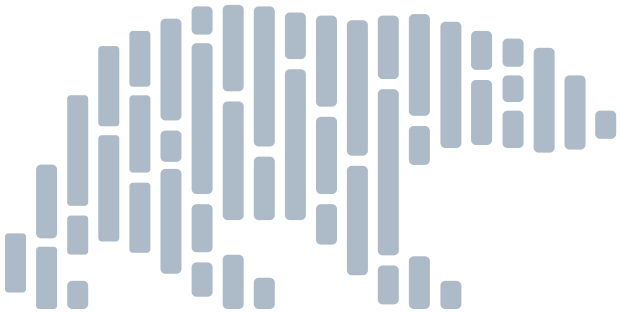polars.DataFrame.group_by_dynamic#
- DataFrame.group_by_dynamic(
- index_column: IntoExpr,
- *,
- every: str | timedelta,
- period: str | timedelta | None = None,
- offset: str | timedelta | None = None,
- include_boundaries: bool = False,
- closed: ClosedInterval = 'left',
- label: Label = 'left',
- group_by: IntoExpr | Iterable[IntoExpr] | None = None,
- start_by: StartBy = 'window',
Group based on a time value (or index value of type Int32, Int64).
Time windows are calculated and rows are assigned to windows. Different from a normal group by is that a row can be member of multiple groups. By default, the windows look like:
[start, start + period)
[start + every, start + every + period)
[start + 2*every, start + 2*every + period)
…
where
startis determined bystart_by,offset,every, and the earliest datapoint. See thestart_byargument description for details.Warning
The index column must be sorted in ascending order. If
group_byis passed, then the index column must be sorted in ascending order within each group.Changed in version 0.20.14: The
byparameter was renamedgroup_by.- Parameters:
- index_column
Column used to group based on the time window. Often of type Date/Datetime. This column must be sorted in ascending order (or, if
group_byis specified, then it must be sorted in ascending order within each group).In case of a dynamic group by on indices, dtype needs to be one of {Int32, Int64}. Note that Int32 gets temporarily cast to Int64, so if performance matters use an Int64 column.
- every
interval of the window
- period
length of the window, if None it will equal ‘every’
- offset
offset of the window, does not take effect if
start_byis ‘datapoint’. Defaults to zero.- include_boundaries
Add the lower and upper bound of the window to the “_lower_boundary” and “_upper_boundary” columns. This will impact performance because it’s harder to parallelize
- closed{‘left’, ‘right’, ‘both’, ‘none’}
Define which sides of the temporal interval are closed (inclusive).
- label{‘left’, ‘right’, ‘datapoint’}
Define which label to use for the window:
‘left’: lower boundary of the window
‘right’: upper boundary of the window
‘datapoint’: the first value of the index column in the given window. If you don’t need the label to be at one of the boundaries, choose this option for maximum performance
- group_by
Also group by this column/these columns
- start_by{‘window’, ‘datapoint’, ‘monday’, ‘tuesday’, ‘wednesday’, ‘thursday’, ‘friday’, ‘saturday’, ‘sunday’}
The strategy to determine the start of the first window by.
‘window’: Start by taking the earliest timestamp, truncating it with
every, and then addingoffset. Note that weekly windows start on Monday.‘datapoint’: Start from the first encountered data point.
a day of the week (only takes effect if
everycontains'w'):‘monday’: Start the window on the Monday before the first data point.
‘tuesday’: Start the window on the Tuesday before the first data point.
…
‘sunday’: Start the window on the Sunday before the first data point.
The resulting window is then shifted back until the earliest datapoint is in or in front of it.
- Returns:
- DynamicGroupBy
Object you can call
.aggon to aggregate by groups, the result of which will be sorted byindex_column(but note that ifgroup_bycolumns are passed, it will only be sorted within each group).
See also
Notes
If you’re coming from pandas, then
# polars df.group_by_dynamic("ts", every="1d").agg(pl.col("value").sum())
is equivalent to
# pandas df.set_index("ts").resample("D")["value"].sum().reset_index()
though note that, unlike pandas, polars doesn’t add extra rows for empty windows. If you need
index_columnto be evenly spaced, then please combine withDataFrame.upsample().The
every,periodandoffsetarguments are created with the following string language:1ns (1 nanosecond)
1us (1 microsecond)
1ms (1 millisecond)
1s (1 second)
1m (1 minute)
1h (1 hour)
1d (1 calendar day)
1w (1 calendar week)
1mo (1 calendar month)
1q (1 calendar quarter)
1y (1 calendar year)
1i (1 index count)
Or combine them (except in
every): “3d12h4m25s” # 3 days, 12 hours, 4 minutes, and 25 secondsBy “calendar day”, we mean the corresponding time on the next day (which may not be 24 hours, due to daylight savings). Similarly for “calendar week”, “calendar month”, “calendar quarter”, and “calendar year”.
In case of a group_by_dynamic on an integer column, the windows are defined by:
“1i” # length 1
“10i” # length 10
Examples
>>> from datetime import datetime >>> df = pl.DataFrame( ... { ... "time": pl.datetime_range( ... start=datetime(2021, 12, 16), ... end=datetime(2021, 12, 16, 3), ... interval="30m", ... eager=True, ... ), ... "n": range(7), ... } ... ) >>> df shape: (7, 2) ┌─────────────────────┬─────┐ │ time ┆ n │ │ --- ┆ --- │ │ datetime[μs] ┆ i64 │ ╞═════════════════════╪═════╡ │ 2021-12-16 00:00:00 ┆ 0 │ │ 2021-12-16 00:30:00 ┆ 1 │ │ 2021-12-16 01:00:00 ┆ 2 │ │ 2021-12-16 01:30:00 ┆ 3 │ │ 2021-12-16 02:00:00 ┆ 4 │ │ 2021-12-16 02:30:00 ┆ 5 │ │ 2021-12-16 03:00:00 ┆ 6 │ └─────────────────────┴─────┘
Group by windows of 1 hour.
>>> df.group_by_dynamic("time", every="1h", closed="right").agg(pl.col("n")) shape: (4, 2) ┌─────────────────────┬───────────┐ │ time ┆ n │ │ --- ┆ --- │ │ datetime[μs] ┆ list[i64] │ ╞═════════════════════╪═══════════╡ │ 2021-12-15 23:00:00 ┆ [0] │ │ 2021-12-16 00:00:00 ┆ [1, 2] │ │ 2021-12-16 01:00:00 ┆ [3, 4] │ │ 2021-12-16 02:00:00 ┆ [5, 6] │ └─────────────────────┴───────────┘
The window boundaries can also be added to the aggregation result
>>> df.group_by_dynamic( ... "time", every="1h", include_boundaries=True, closed="right" ... ).agg(pl.col("n").mean()) shape: (4, 4) ┌─────────────────────┬─────────────────────┬─────────────────────┬─────┐ │ _lower_boundary ┆ _upper_boundary ┆ time ┆ n │ │ --- ┆ --- ┆ --- ┆ --- │ │ datetime[μs] ┆ datetime[μs] ┆ datetime[μs] ┆ f64 │ ╞═════════════════════╪═════════════════════╪═════════════════════╪═════╡ │ 2021-12-15 23:00:00 ┆ 2021-12-16 00:00:00 ┆ 2021-12-15 23:00:00 ┆ 0.0 │ │ 2021-12-16 00:00:00 ┆ 2021-12-16 01:00:00 ┆ 2021-12-16 00:00:00 ┆ 1.5 │ │ 2021-12-16 01:00:00 ┆ 2021-12-16 02:00:00 ┆ 2021-12-16 01:00:00 ┆ 3.5 │ │ 2021-12-16 02:00:00 ┆ 2021-12-16 03:00:00 ┆ 2021-12-16 02:00:00 ┆ 5.5 │ └─────────────────────┴─────────────────────┴─────────────────────┴─────┘
When closed=”left”, the window excludes the right end of interval: [lower_bound, upper_bound)
>>> df.group_by_dynamic("time", every="1h", closed="left").agg(pl.col("n")) shape: (4, 2) ┌─────────────────────┬───────────┐ │ time ┆ n │ │ --- ┆ --- │ │ datetime[μs] ┆ list[i64] │ ╞═════════════════════╪═══════════╡ │ 2021-12-16 00:00:00 ┆ [0, 1] │ │ 2021-12-16 01:00:00 ┆ [2, 3] │ │ 2021-12-16 02:00:00 ┆ [4, 5] │ │ 2021-12-16 03:00:00 ┆ [6] │ └─────────────────────┴───────────┘
When closed=”both” the time values at the window boundaries belong to 2 groups.
>>> df.group_by_dynamic("time", every="1h", closed="both").agg(pl.col("n")) shape: (4, 2) ┌─────────────────────┬───────────┐ │ time ┆ n │ │ --- ┆ --- │ │ datetime[μs] ┆ list[i64] │ ╞═════════════════════╪═══════════╡ │ 2021-12-16 00:00:00 ┆ [0, 1, 2] │ │ 2021-12-16 01:00:00 ┆ [2, 3, 4] │ │ 2021-12-16 02:00:00 ┆ [4, 5, 6] │ │ 2021-12-16 03:00:00 ┆ [6] │ └─────────────────────┴───────────┘
Dynamic group bys can also be combined with grouping on normal keys
>>> df = df.with_columns(groups=pl.Series(["a", "a", "a", "b", "b", "a", "a"])) >>> df shape: (7, 3) ┌─────────────────────┬─────┬────────┐ │ time ┆ n ┆ groups │ │ --- ┆ --- ┆ --- │ │ datetime[μs] ┆ i64 ┆ str │ ╞═════════════════════╪═════╪════════╡ │ 2021-12-16 00:00:00 ┆ 0 ┆ a │ │ 2021-12-16 00:30:00 ┆ 1 ┆ a │ │ 2021-12-16 01:00:00 ┆ 2 ┆ a │ │ 2021-12-16 01:30:00 ┆ 3 ┆ b │ │ 2021-12-16 02:00:00 ┆ 4 ┆ b │ │ 2021-12-16 02:30:00 ┆ 5 ┆ a │ │ 2021-12-16 03:00:00 ┆ 6 ┆ a │ └─────────────────────┴─────┴────────┘ >>> df.group_by_dynamic( ... "time", ... every="1h", ... closed="both", ... group_by="groups", ... include_boundaries=True, ... ).agg(pl.col("n")) shape: (6, 5) ┌────────┬─────────────────────┬─────────────────────┬─────────────────────┬───────────┐ │ groups ┆ _lower_boundary ┆ _upper_boundary ┆ time ┆ n │ │ --- ┆ --- ┆ --- ┆ --- ┆ --- │ │ str ┆ datetime[μs] ┆ datetime[μs] ┆ datetime[μs] ┆ list[i64] │ ╞════════╪═════════════════════╪═════════════════════╪═════════════════════╪═══════════╡ │ a ┆ 2021-12-16 00:00:00 ┆ 2021-12-16 01:00:00 ┆ 2021-12-16 00:00:00 ┆ [0, 1, 2] │ │ a ┆ 2021-12-16 01:00:00 ┆ 2021-12-16 02:00:00 ┆ 2021-12-16 01:00:00 ┆ [2] │ │ a ┆ 2021-12-16 02:00:00 ┆ 2021-12-16 03:00:00 ┆ 2021-12-16 02:00:00 ┆ [5, 6] │ │ a ┆ 2021-12-16 03:00:00 ┆ 2021-12-16 04:00:00 ┆ 2021-12-16 03:00:00 ┆ [6] │ │ b ┆ 2021-12-16 01:00:00 ┆ 2021-12-16 02:00:00 ┆ 2021-12-16 01:00:00 ┆ [3, 4] │ │ b ┆ 2021-12-16 02:00:00 ┆ 2021-12-16 03:00:00 ┆ 2021-12-16 02:00:00 ┆ [4] │ └────────┴─────────────────────┴─────────────────────┴─────────────────────┴───────────┘
Dynamic group by on an index column
>>> df = pl.DataFrame( ... { ... "idx": pl.int_range(0, 6, eager=True), ... "A": ["A", "A", "B", "B", "B", "C"], ... } ... ) >>> ( ... df.group_by_dynamic( ... "idx", ... every="2i", ... period="3i", ... include_boundaries=True, ... closed="right", ... ).agg(pl.col("A").alias("A_agg_list")) ... ) shape: (4, 4) ┌─────────────────┬─────────────────┬─────┬─────────────────┐ │ _lower_boundary ┆ _upper_boundary ┆ idx ┆ A_agg_list │ │ --- ┆ --- ┆ --- ┆ --- │ │ i64 ┆ i64 ┆ i64 ┆ list[str] │ ╞═════════════════╪═════════════════╪═════╪═════════════════╡ │ -2 ┆ 1 ┆ -2 ┆ ["A", "A"] │ │ 0 ┆ 3 ┆ 0 ┆ ["A", "B", "B"] │ │ 2 ┆ 5 ┆ 2 ┆ ["B", "B", "C"] │ │ 4 ┆ 7 ┆ 4 ┆ ["C"] │ └─────────────────┴─────────────────┴─────┴─────────────────┘

